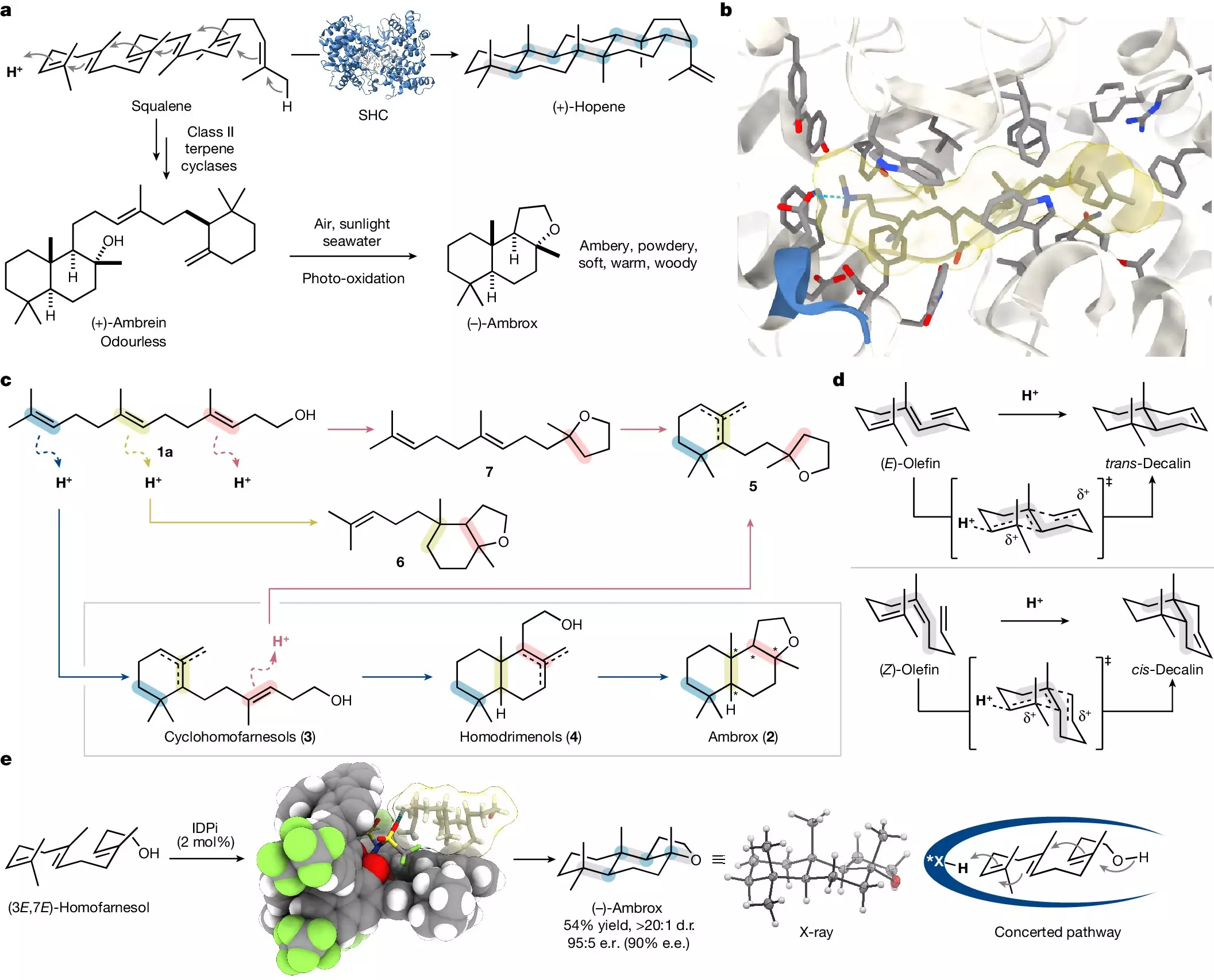The fascination with fragrance is deeply ingrained in human culture, dating back to ancient civilizations where pleasant smells were often associated with health and well-being. Perfumes have not only served as personal adornments but have also acted as inspirations for art, literature, and even spirituality. Historically, the extraction of scents from natural resources often came at an environmental cost. For instance, ambrox, a highly valued aromatic compound traditionally derived from ambergris—produced in the digestive system of sperm whales—was once a staple in the perfume industry. However, this reliance on an unsustainable source raises significant questions about ethical sourcing and biodiversity conservation.
Ambrox is not merely any fragrance compound; its complex molecular structure is chiral, meaning it can exist in different forms, known as isomers. Out of the possible 16 variations of ambrox, only one is responsible for the desirable olfactory experience, making the synthesis of this compound particularly challenging. The need for precision in replicating the correct chiral form has historically hindered attempts to create ambrox synthetically in a lab setting. In the past, the extraction process was not only labor-intensive but also limited by the availability of natural sources, like clary sage, the plant from which precursors for ambrox can be extracted.
The Dawn of Sustainable Synthesis
Recent advancements in synthetic chemistry have led to promising new methods of generating ambrox without environmental detriment. A significant breakthrough comes from a study led by researchers at Max Planck Institute for Coal Research, with Prof. Benjamin List at the helm. The study, published in the prestigious journal *Nature*, introduces a novel synthetic pathway that emulates natural processes while paving the way for industrial applications. This new method enables the conversion of homofarnesol—a C15 precursor derived from a range of botanical sources—into the sought-after ambrox through a streamlined, one-step process.
Nature as an Inspiration for Chemists
The essence of the research conducted by Prof. List and his team revolves around mimicking the complex reactions found in biological systems. Mathias Turberg, a lead author in the study, emphasizes how intricate molecular transformations can be initiated from simpler starting materials, thus merging the wisdom of nature with modern chemistry. The research team aims to provide a unified method for creating complex molecules efficiently, which showcases the growing trend in science to learn from natural processes.
The Role of Catalysts and Solvents in Synthesis
Central to the success of this synthetic journey is the innovative use of confined catalysts and specialized solvents. The approach taken by the List group involves a specially designed catalyst capable of organizing homofarnesol effectively into the desired structure. This is combined with a fluorinated solvent that stabilizes intermediates, increasing the reaction’s speed and selectivity. Consequently, where conventional biocatalytic methods may require several days to yield results, the new process achieves the same in mere hours—a striking improvement that could revolutionize the way ambrox and similar compounds are synthesized in the future.
One of the primary concerns in synthetic chemistry is the scalability of the methods developed. Fortunately, the team has demonstrated that their innovative synthesis can easily be scaled up for larger applications, making it viable for industrial production. The added benefit of being able to recover and reuse catalysts and solvents further enhances the sustainability of this process. As industries strive for greener solutions, such advancements pave the way for more eco-friendly production methods that align with contemporary environmental goals.
The exploration of ambrox synthesis encapsulates a broader trend in chemistry toward sustainability and ethical sourcing, driven by both innovation and a deeper understanding of natural processes. As the world continues to seek fragrances that enhance life while minimizing ecological impact, such pioneering work represents a vital step forward in the art and science of scent.


Leave a Reply